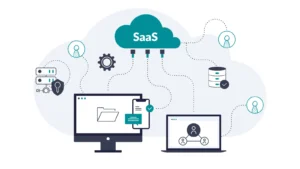Data Protection as a Service, in short, DPaaS, is a web-delivered or cloud-based service that protects large-scale data and services of organizations. Usually, these services are subscription-based and include service-level agreements (SLAs) between the service provider and clients.
DPaaS is either Disaster Recovery as a Service (DRaaS) or Backup as a Service (BaaS), and the service provider manages the services either completely or partially. With DPaaS, the clients outsource their recovery/ disaster recovery and data backup to the service provider.
Why DPaaS is Important Today & How Does DPaaS Works?
Due to the increasing use of cloud and edge applications, primary data volumes are growing day by day. To stay on track, organizations require a backup capacity of approximately 10 to 50 times the primary data. Traditional data protection services are no longer a legitimate first-choice solution as they are confusing and expensive to operate and manage. Additionally, there are other factors that these legacy technologies are unable to handle, such as sophisticated security breaches and changes to the data environment.
DPaaS is a great solution for organizations to combat these problems, as it reduces risk by merging all data protection efforts into one platform. It delivers these efforts via a consumption-based model and through a single vendor.
Data protection as a service is a subscription-based model that organizations can utilize to relocate data from their in-house data infrastructure. This enables no organization-level ownership and maintenance, just access and use it as needed.
Companies are free to choose how much data they need to compute, manage, store, and network based on their past experiences. They can also add or omit storage capacity as required. They can also specify the retention, encryption, and security policies as per the lease, and the vendor will take care of the backup storage plan and deployment.
What are the Key Features of DPaaS?

Some of the most beneficial aspects of DPaaS are:
- It is highly adaptable to the organization’s needs and demands. You can add or eliminate resources as and when needed.
- You only pay for the backup capacity you need and use. This enables you to transfer data protection into operational costs. Also, there’s no need for any maintenance from your end.
- As there’s no management required, organizations can utilize resources for more high-value tasks.
- DPaaS is centrally managed and cloud-based, and it offers multidimensional benefits like data backup, DR, archive from edge to cloud, and data management.
- With DPaaS, you increase your reliability and visibility. This allows you to keep track of changing data trends and gain trust from clients for decreased risks and performance enhancement.
- DPaaS deploys data directly to the cloud. This provides centralized control across all of your business units and data types. There’s no need to alter your current workflow.
- DPaaS allows its users to customize and configure their own environment.
- It is super easy and efficient to use. There is no requirement for any data tuning or installation. Once you decide on backup schedules and management policies, it is running and ready to use.
What Are Some Potential Disadvantages of Data Protection as a Service (DPaaS)?
Just like any other technological service, DPaaS might not be suitable for all organizations. Here I’ve listed some potential drawbacks of this service that you need to consider:
- In the case of most cloud services, the billing metrics might not be too well-defined. As your protected data increases, the subscription plan charge will go up.
- When you want to transfer data from DPaaS to the internal cloud or public clouds, you might need to pay egress charges (fees required to pay when transferring data out of a cloud environment).
- With the arrival of newer technologies, vendors might adapt to them or refresh their existing service. These costs won’t be visible to the user but will hike up the subscription charges.
- Some vendors offer subscription plans with a minimum terabyte storage requirement. If your organization does not have that sort of storage requirement, it might be an unnecessary added cost for you.
What’s the Future For DPaaS?
With changing technological trends, IT companies are leaning towards adapting Data Protection as a Service in cloud computing. These trends are:
- Increasing options for software-as-a-service applications.
- Manual IT skills scarcity.
- Popularity of remote work culture.
- Cost-cutting through subscription-based or pay-as-you-use models.
- Sophisticated ways of security breaches through cybercrime.
- Rise in data growth.
In Conclusion
Data protection as a service market is growing exceptionally well. DPaaS assists you in streamlining your backup and recovery, protecting against large-scale data loss and security breaches, and also recovering quickly from any disaster.
The rising technological trends also generate the need for DPaaS and STaaS. This service is available for organizational use through backup vendors, managed service providers, and large public cloud providers.
Related: 5 Barriers to Analytical Intelligence (And How AI Breaks Them)
Related: What Are The Potential Risks Associated With A Cryptocurrency Hot Wallet?







